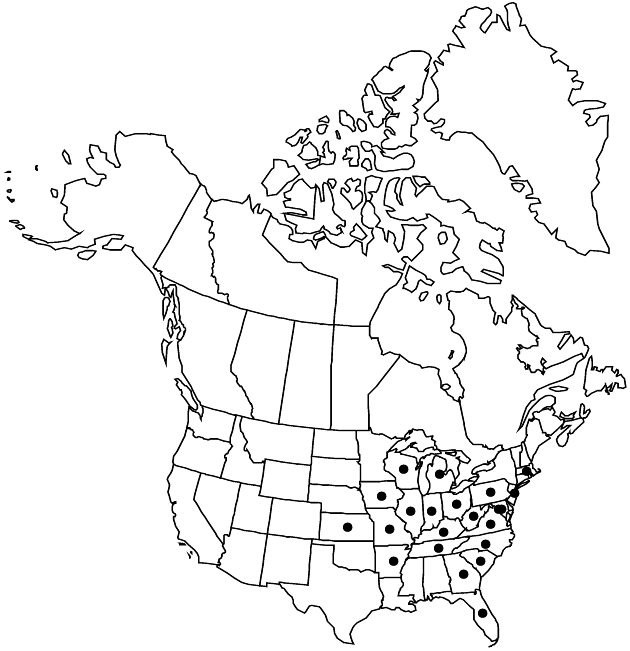Helianthus occidentalis subsp. occidentalis
Leaves entire or nearly so, scabrous or hirsute, rough to touch.
Phenology: Flowering late summer–fall.
Habitat: Fields, barrens
Elevation: 10–600+ m
Distribution

Ark., D.C., Fla., Ga., Ill., Ind., Iowa, Kans., Ky., Md., Mass., Mich., Mo., N.J., N.C., Ohio, Pa., S.C., Tenn., Va., W.Va., Wis.
Discussion
In its typical form, Helianthus occidentalis is distinctive with its relatively few basal leaves and scapiform stems. Still unresolved is the status of H. dowellianus, which may deserve recognition at some level. These plants have the head morphology of H. occidentalis but have multiple pairs of well-developed cauline leaves. Plants with this morphology are found in the southern Appalachian region from Maryland to Georgia. According to C. B. Heiser et al. (1969), these plants may be hybrids of H. occidentalis and H. atrorubens. Natural hybrids of H. occidentalis with H. mollis have been called H. ×cinereus Torrey & A. Gray. Hybrids of H. occidentalis with other species are known.
Selected References
None.